Indigenous to Southern Africa, the African iris plant is the jewel of the savannah. It boasts an enchanting, delicate appearance with beautiful blooms on an arching stem.
The flowers of the African iris open into a stunning configuration that inspired one of its other names – the African butterfly iris plant.
Coupled with dense clumps of leaves that make for dramatic ground cover, it’s no wonder that the African iris is a show-stopper on the African savannah.
If you’re a plant enthusiast or just curious to know more about this beauty, here are a few fascinating things to know about Africa’s iris.
The African Iris Plant

The appearance of the African iris, dietes iridioides, resembles its iris relatives. It has long, upright, spiky leaves and flower stalks that bear a succession of blooms. A prolific flowerer, the African iris carries its 7-cm flowers on a wiry, arching stem.
Its white or yellow blossoms consist of 5-6 slightly curled drooping petals. These are layered beneath the second set of petals of a contrasting color that emerges in a vertical position from the center.
The robust plant has dense clumps of stiff sword-like leaves that radiate up and out in a fan-shaped pattern. The narrow leaves are glossy dark green, mostly 25-30 mm wide, almost the same as the stems.
The foliage typically remains evergreen throughout winter unless burnt by chilly temperatures.
The African iris is a perennial plant with a moderate growth rate, reaching almost 1 meter tall and over 1 meter across. It is a tough drought-resistant plant that thrives best under the full intensity of the African sun.
The plant grows and spreads by rhizomes, with plantlets developing on the flower stalks and rooting easily once they touch the ground. Its fruit is an oval-shaped capsule that disintegrates to release black seeds.
African Iris Colors
The African iris comes in two colors: white and yellow.
The main difference between the African iris white and yellow species is their flowers.
White African iris
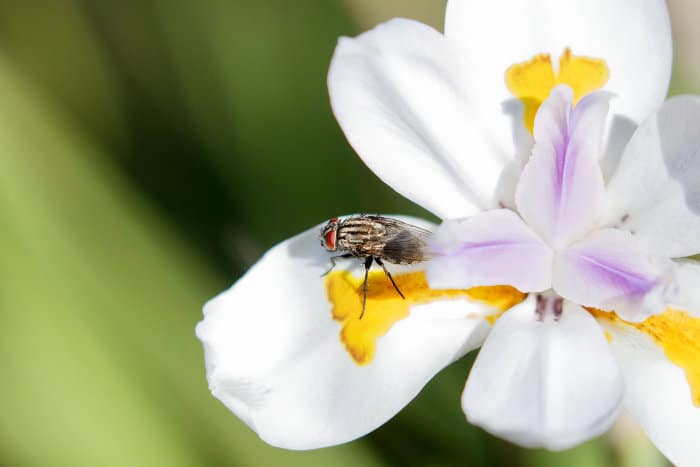
The white African iris flowers are more rounded with three distinct petal layers.
Its outer white petals feature gold close to the base, while the inner white petals have a brown marking at the base. Its innermost petals are narrower and violet in color.
The African white iris has fewer, larger and tidier leaves. The flowers burst from the stalks amid stiff, evergreen foliage.
Yellow African iris
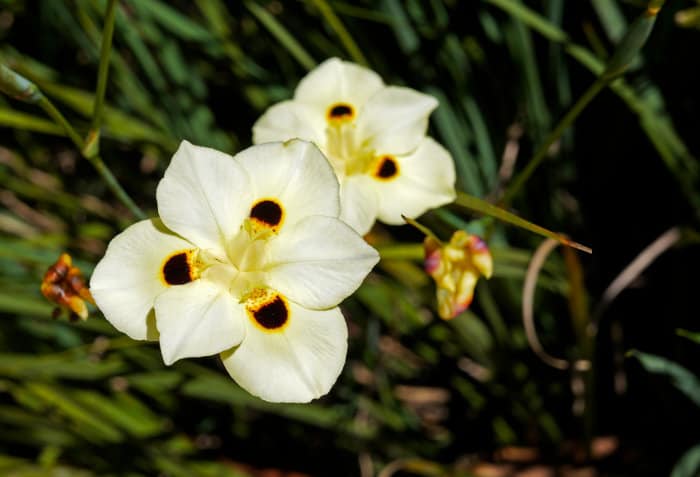
The yellow African iris features large, grassy clumps of dark green leaves with many 7-8 cm flowers. The tinted yellow flowers have three dark brown spots; each of these has an orange outline.
The African iris yellow flowers are a stunning sight. If you’re looking for more striking flora, have a look at these wild plants in Africa.
When Do African Irises Bloom?
The flowers of the African iris are showy, unique, and striking. They bloom sporadically throughout the year, especially during spring and early summer.
How long do African iris bloom? Although the flowers are short-lived – lasting just a day, they are quickly replaced. This is because the plant blooms in profusion over an extended period.
The blooms usually come in bursts, with a fortnight of rest between flowering events.
Every stalk produces a big supply of buds, giving rise to numerous blooms. The flowers are typically closed to the world by midday, except on overcast days.
Where to See the African Iris
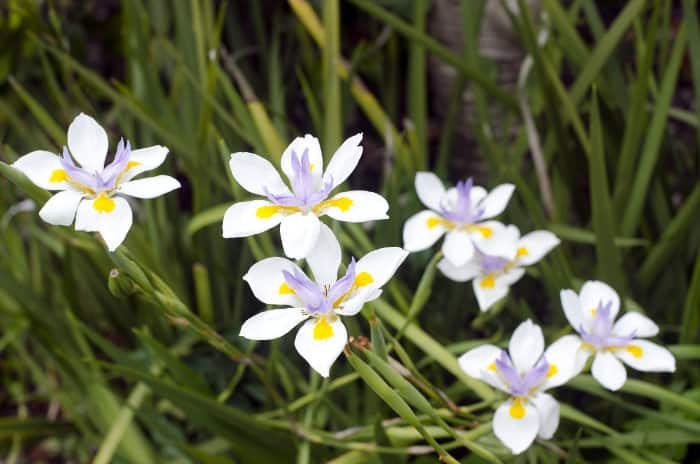
The African iris originates from tropical Africa, with most species being widespread from eastern to southern Africa. In eastern Africa, you can see them in Ethiopia and Kenya, as well as in Congo and Angola to the west.
You can also admire them further south in Zambia and South Africa.
Healing Powers
Irises have had a long history of use in medicinal remedies. From ancient times, the fleshy, creeping rhizome of the iris has enjoyed a considerable reputation for medicinal virtues.
Some use the juice from the fresh roots as a cosmetic for removing freckles from the skin. Additionally, people take infusions made from the inner part of the rhizomes orally in enemas to treat dysentery.
The rhizomes are also used for hypertension and in childbirth.
In the dry state, people use the root for lung problems, coughs, and hoarseness. It was also formerly used in the treatment of bronchitis and chronic diarrhea.
The dried powder helps to excite sneezing and relieve congested headaches, while chewing the dried root assists with overcoming disagreeable breath.
The rhizomes of the iris are ingredients in tonics for goats. The plant is also a great attractor of butterflies and bees, which makes it great for bee-keeping.
From the earliest times, many used the iris to make perfume. The intense and delicate odor was favorable to use in the finest scents.
African Iris Plants Symbolism

Since ancient times, the African iris has had rich meanings attached to it, inspired by its striking beauty and uniqueness.
Some have found drawings of the African iris in several ancient Egyptian palaces.
The ancients placed an iris flower on the brow of the Sphinx and on the scepter of the pharaoh. They identified the three leaves of its blossoms as symbols of faith, courage, and wisdom.
The iris flower actually derives its name from Greek mythology, being named after Iris, the goddess of the rainbow.
In ancient Greece, people planted irises over the graves of women to summon the goddess Iris to guide the dead on their journey to the afterlife.
In ancient Rome, the iris was dedicated to Juno, a Roman deity, and symbolized power and majesty.
During the Middle Ages, the iris became linked to the monarchy in France, with the fleur-de-lis eventually becoming the recognized symbol of the country.
Through its intricate history, people gave irises as gifts to convey deep sentiments such as fondness and admiration.
Over time, the different colors of the iris have come to symbolize different meanings: the white iris symbolizes purity, and the yellow iris serves as a symbol of passion and eloquence.
The African Iris in African Folklore
Some African cultures believe that if you’ve attended a funeral or entered a house with a corpse, you must chew the rhizomes of the African iris.
You would then spit them onto the ground to chase away bad luck. If you don’t, an immediate member of your family may die.
In parts of Africa, the African iris is known as the rain iris as some believe that the flowering of this plant presages the coming of the rains.
See the South African Iris in Bloom
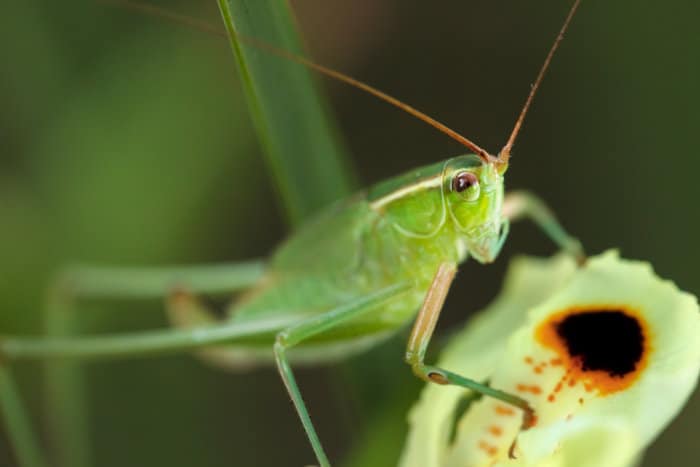
If you’re hoping to see these stunning irises, South Africa is a wonderful destination to visit. Here you can see a variety of stunning plants and flowers in bloom.
If you’re an animal lover too, booking a safari in Africa is a great way to take in the natural surroundings.
So why not time your visit to Africa just before the next rainy season? You just might witness the rainmaking powers of the gorgeous African iris!
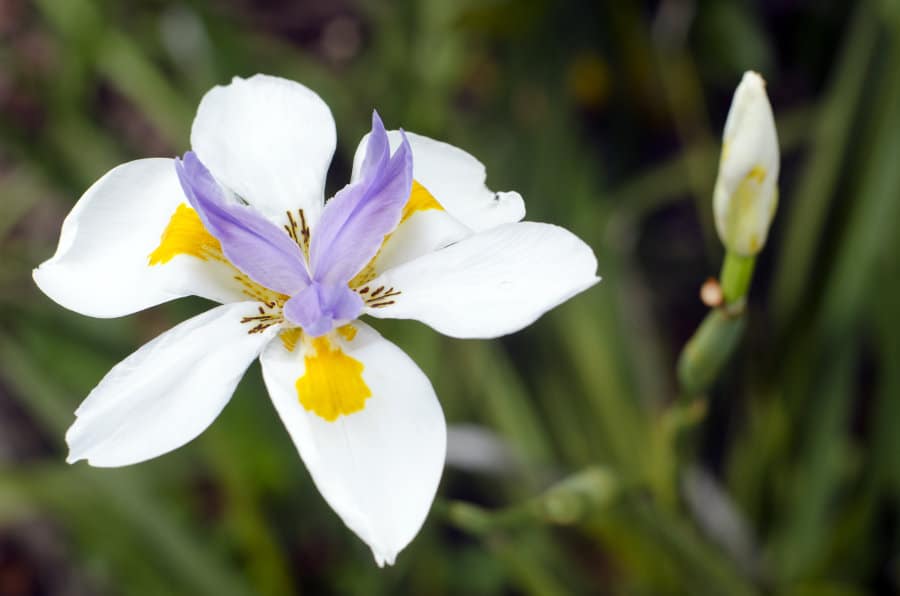
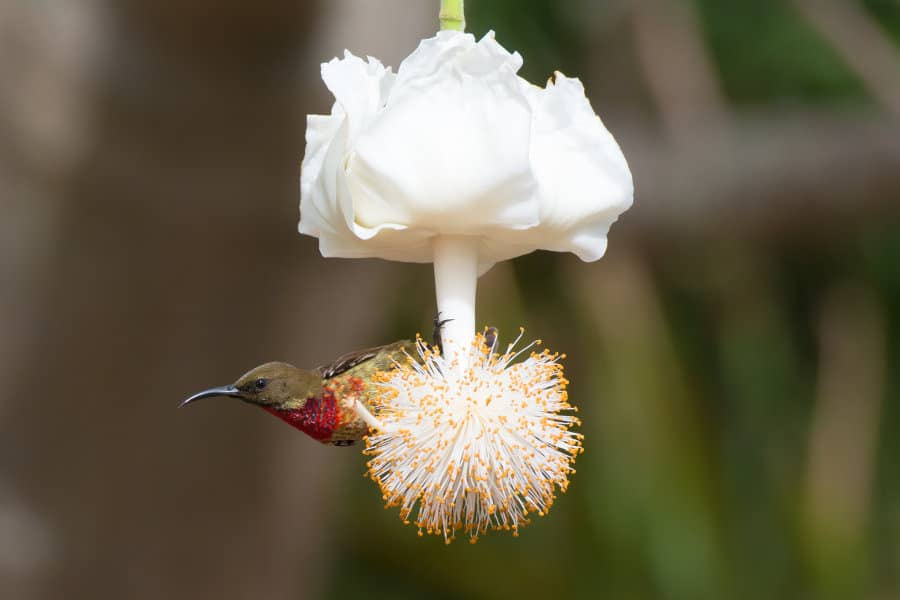
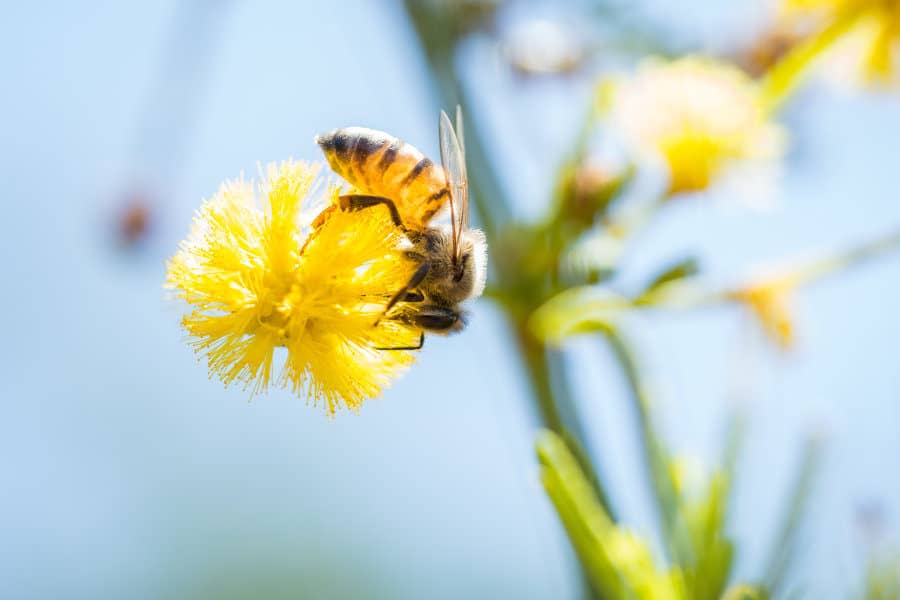
Can I grow African Iris with the seeds?
The flowers are very beautiful.
Thanking you for sending the photos to us.